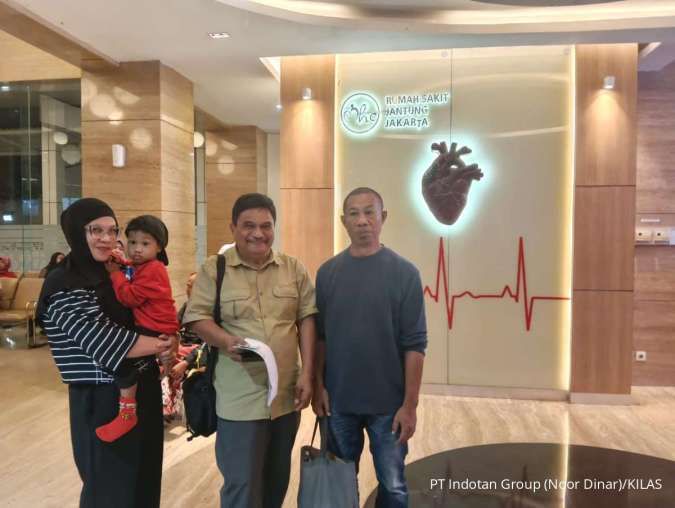JAKARTA. The National Transportation Safety Committee (KNKT) has blamed pilot error for the crash of the Russian-made Sukhoi Superjet 100 passenger aircraft on May 9 that killed all 45 people onboard.KNKT chief Tatang Kurniadi said on Tuesday that the commission’s seven-month investigation concluded the two pilots in the demonstration flight had made “errors that were triggered by the environment”.He said that unfamiliarity with the route and a distraction had caused the pilots to direct the plane toward and subsequently crash into Mount Salak, near Bogor, West Java.“The pilots were not aware of the mountainous area surrounding the route due to various factors. As a result, they disregarded the warning signals of the plane’s Terrain Awareness Warning System [TAWS],” Tatang said, reading out the investigation report during a press conference at KNKT headquarters in Jakarta.A TAWS is a device that predicts if the likely future position of the aircraft will intersect with the ground.According to data retrieved from the plane’s black box, the warning signals sounded six times. However, the pilots perceived the multiple alerts as “a problem on the database” and switched off the device.Capt. Nur Cahyo, a KNKT team member, said the crash could have been prevented if the pilots responded at least 24 seconds after the fi rst warning appeared.The investigation team also found that the presence of a potential buyer of the aircraft in the cockpit and a “prolonged conversation” might have distracted the pilots’ attention.“Members of the crew were involved in a long dialogue that was not related to the flight. As a result, they failed to get the plane back on track when it had unintentionally deviated from its route,” he added.The conversation apparently made the pilots unaware that the aircraft was heading south to the mountainous area, instead of back toward the planned route.The report also mentions that a lack of information from the air traffi c controller (ATC) at Soekarno- Hatta International Airport may have contributed to the crash.“The radar service had not established the minimum vectoring altitudes. Their system was not equipped with a functioning Minimum Safe Altitude Warning [MSAW] system for the particular area surrounding Mt. Salak,” Tatang said.Aviation expert Alvin Lie had previously said the airport’s radar system was obsolete because the instruments had reportedly not been replaced since 1985.Based on the investigation results, the commission has issued safety recommendations for the relevant parties, namely the Sukhoi Civil Aircraft Company, Russia’s Department of Aviation Industry, Indonesia’s Directorate General of Civil Aviation and the airport’s operator, PT Angkasa Pura II.The KNKT suggests Sukhoi to provide crews with sufficient aeronautical information and review its demonstration flight practices.PT Angkasa Pura II is urged “to provide an acceptable workload for the air traffic controller” and “to ensure its radar warning system functions properly”.Russian Ambassador to Indonesia Mikhail Galuzin, who was present at the press conference, welcomed the “objective and balanced” investigation from the KNKT. He said the Russian Embassy in Indonesia would continue to monitor compensation disbursements to the families of the 34 Indonesian victims. “As far as I know, 17 out of 34 families of the victims have received compensation,” Galuzin said. (The Jakarta Post)KNKT Findings* The aircraft was airworthy prior to the flight* The flight crew had valid flight licenses and medical certificates* The flight data edit display showed that the flight was a Su-30 (Sukhoi military aircraft),leading the controller to believe that the flight was military* The crew requested to descend to 6,000 feet, which was approved by air traffic control,while the minimum sector altitude was 6,900 feet* There were prolonged discussions between the pilots and a potential customer relating to aircraft fuel consumptionSource: KNKT
Pilots blamed for Sukhoi crash
JAKARTA. The National Transportation Safety Committee (KNKT) has blamed pilot error for the crash of the Russian-made Sukhoi Superjet 100 passenger aircraft on May 9 that killed all 45 people onboard.KNKT chief Tatang Kurniadi said on Tuesday that the commission’s seven-month investigation concluded the two pilots in the demonstration flight had made “errors that were triggered by the environment”.He said that unfamiliarity with the route and a distraction had caused the pilots to direct the plane toward and subsequently crash into Mount Salak, near Bogor, West Java.“The pilots were not aware of the mountainous area surrounding the route due to various factors. As a result, they disregarded the warning signals of the plane’s Terrain Awareness Warning System [TAWS],” Tatang said, reading out the investigation report during a press conference at KNKT headquarters in Jakarta.A TAWS is a device that predicts if the likely future position of the aircraft will intersect with the ground.According to data retrieved from the plane’s black box, the warning signals sounded six times. However, the pilots perceived the multiple alerts as “a problem on the database” and switched off the device.Capt. Nur Cahyo, a KNKT team member, said the crash could have been prevented if the pilots responded at least 24 seconds after the fi rst warning appeared.The investigation team also found that the presence of a potential buyer of the aircraft in the cockpit and a “prolonged conversation” might have distracted the pilots’ attention.“Members of the crew were involved in a long dialogue that was not related to the flight. As a result, they failed to get the plane back on track when it had unintentionally deviated from its route,” he added.The conversation apparently made the pilots unaware that the aircraft was heading south to the mountainous area, instead of back toward the planned route.The report also mentions that a lack of information from the air traffi c controller (ATC) at Soekarno- Hatta International Airport may have contributed to the crash.“The radar service had not established the minimum vectoring altitudes. Their system was not equipped with a functioning Minimum Safe Altitude Warning [MSAW] system for the particular area surrounding Mt. Salak,” Tatang said.Aviation expert Alvin Lie had previously said the airport’s radar system was obsolete because the instruments had reportedly not been replaced since 1985.Based on the investigation results, the commission has issued safety recommendations for the relevant parties, namely the Sukhoi Civil Aircraft Company, Russia’s Department of Aviation Industry, Indonesia’s Directorate General of Civil Aviation and the airport’s operator, PT Angkasa Pura II.The KNKT suggests Sukhoi to provide crews with sufficient aeronautical information and review its demonstration flight practices.PT Angkasa Pura II is urged “to provide an acceptable workload for the air traffic controller” and “to ensure its radar warning system functions properly”.Russian Ambassador to Indonesia Mikhail Galuzin, who was present at the press conference, welcomed the “objective and balanced” investigation from the KNKT. He said the Russian Embassy in Indonesia would continue to monitor compensation disbursements to the families of the 34 Indonesian victims. “As far as I know, 17 out of 34 families of the victims have received compensation,” Galuzin said. (The Jakarta Post)KNKT Findings* The aircraft was airworthy prior to the flight* The flight crew had valid flight licenses and medical certificates* The flight data edit display showed that the flight was a Su-30 (Sukhoi military aircraft),leading the controller to believe that the flight was military* The crew requested to descend to 6,000 feet, which was approved by air traffic control,while the minimum sector altitude was 6,900 feet* There were prolonged discussions between the pilots and a potential customer relating to aircraft fuel consumptionSource: KNKT

